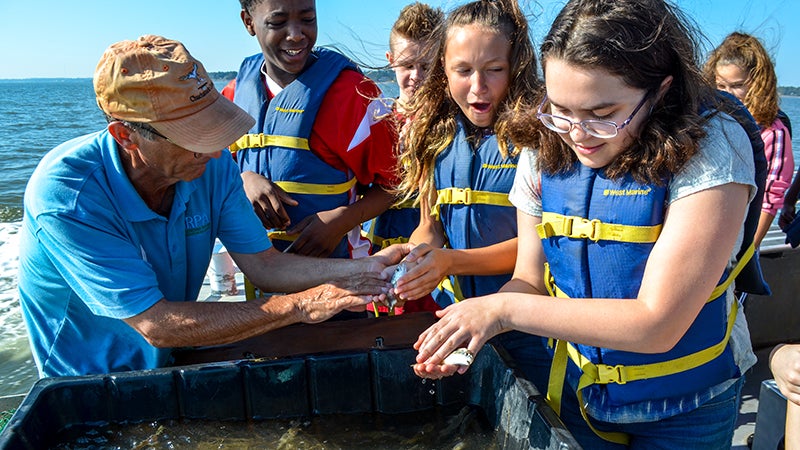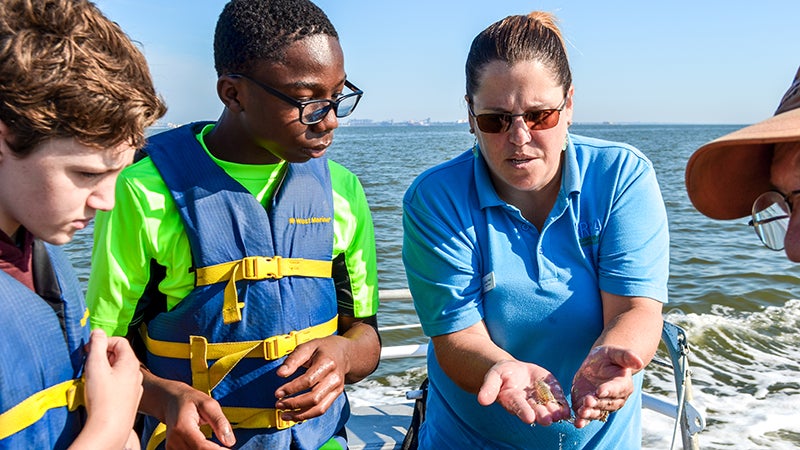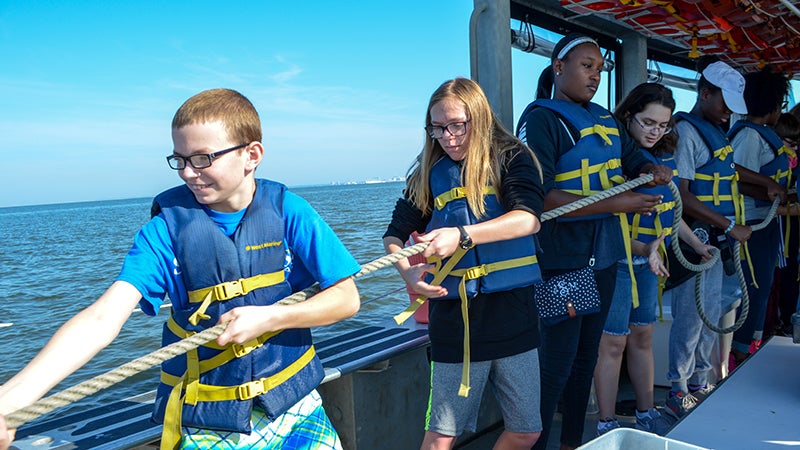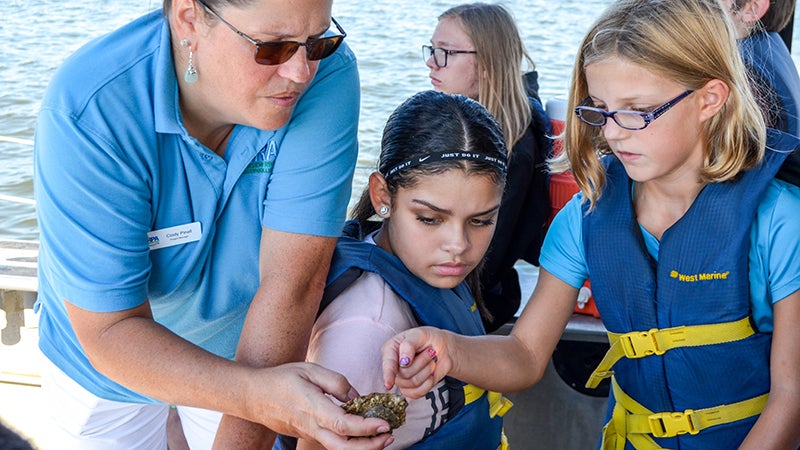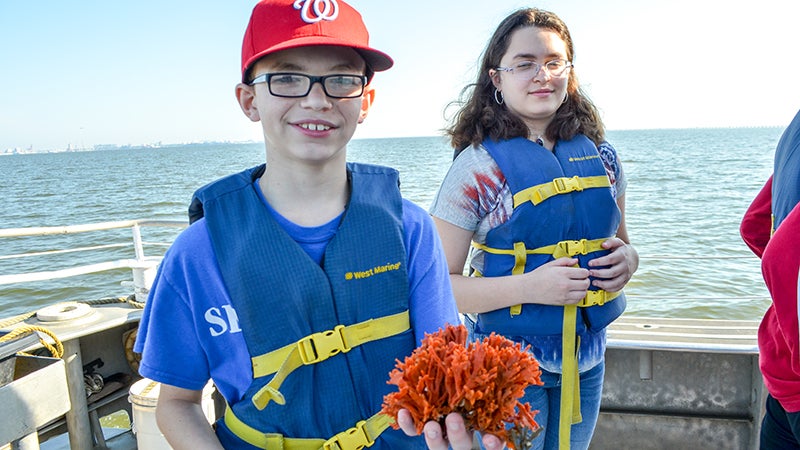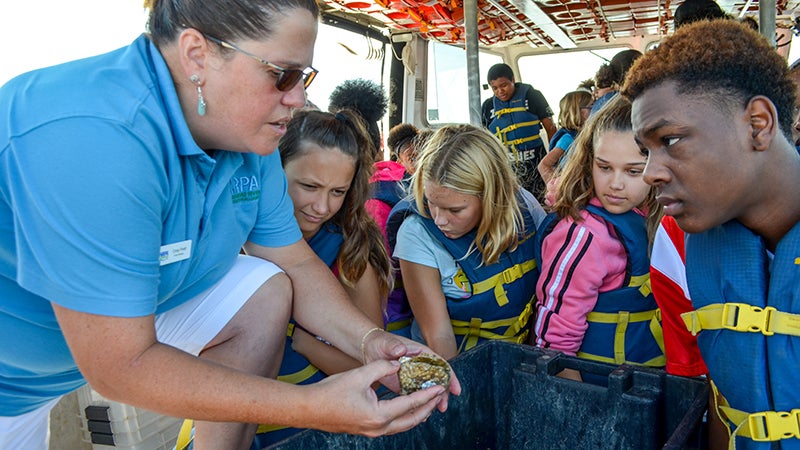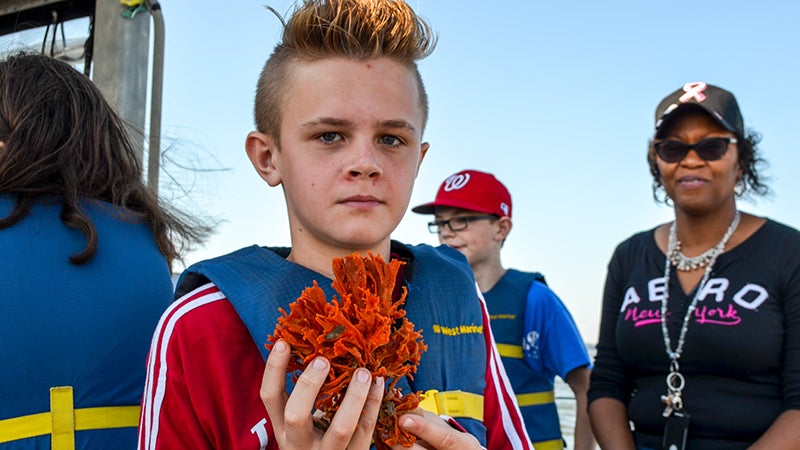Lessons on the James River
Published 9:56 pm Thursday, October 4, 2018
With their life jackets snapped on tight, 27 seventh-graders from King’s Fork Middle School set off in a boat on the Chuckatuck Creek Thursday morning, along with their teachers and members of the Chesapeake Bay Foundation and Nansemond River Preservation Alliance.
CBF educator Yancey Powell held a safety briefing and quizzed the students as the boat was piloted by Jimmy Sollner, the Hampton Roads Environmental Education Program Captain.
“C’mon y’all, open up your minds,” Sollner said to get the children to put their thinking caps on. “This is problem solving.”
This group of problem-solvers was one of two on Thursday that boarded the Jenny S., a boat built for the CBF by Ted Stanley and named in honor of his wife Jennifer Stanley, according to a plaque inside the cabin.
The NRPA has been working with members of CBF this week to bring seventh-graders from each Suffolk Middle School on waterlogged field trips for hands-on lessons about the Chesapeake Bay. This marks the partnership’s sixth year, with separate morning and afternoon groups Monday through Friday, according to NRPA’s Cindy Pinell.
Pinell said more than 1,000 Suffolk seventh-graders have enjoyed these boat trips over the years, plus other outdoor excursions in Suffolk. Each trip makes the lessons they learned in science class sink in deeper, she said.
“They read about fish and see them on TV, but they’ll never touch this stuff unless they have this experience,” she said.
NRPA’s Mike Reiss was answering student questions while the boat rumbled towards the mouth of the James River. The key to a successful outing, according to Reiss, is to keep the students engaged, and the best way to do that is with new experiences.
“You just try to engage them and get them interested in it,” he said.
Simply being on board a boat was a new adventure for some of the children, especially when the Jenny S. ramped up to about 15 knots.
“Sometimes when he speeds up it’s a little bit scary, but then it gets really calm and stuff,” said Jenesis Bannarbie, 12, who enjoyed her first boat ride on Thursday. She also enjoyed watching the water change between rippling and calm.
“Boats are awesome, and the water’s awesome, too,” Alexis Griffith, 12, added.
The smell of fresh water grew stronger and seagulls soared in the crystal-clear skies on the bright and sunny morning as Powell pointed out all of the sights to the students.
Their vantage point revealed the James River Bridge on one side and the Godwin Bridge on the other. The Monitor-Merrimac Memorial Bridge-Tunnel was visible, including the busy morning traffic. They could even spot U.S. Navy ships docked at Norfolk.
Sollner said that the view shows them how interconnected the region’s cities are through waterways, and he and Powell also touched on the bay’s history, especially the communities that thrived on its welfare.
“So, is there a little bit of history here in the James River?” Powell asked.
“There’s history everywhere, every day,” responded Anthony Mickle, 12.
Powell split the young KFMS Jaguars into four teams, dubbed “Sponge,” “Bob,” “Square” and of course “Pants.” The first two teams were also the first to pull rope, then the other two followed.
They tugged on a line attached to the oyster dredge that towed behind the boat along the Nansemond Ridge — a historically productive oyster ground, according to Powell — and another rope attached to the green net filled with fish.
The students were tasked with sorting through the oyster haul for live specimens to go in their orange bucket. They handled each slimy example for a closer look, palming past barnacles and sea sponges with Pinell’s help.
“Smooth on the inside and rough on the outside,” Brandon Farmer, 12, said to describe the oyster in his hand.
Any oysters that didn’t pass inspection were tossed back into the James River.
“We’re going to throw them back in the water, because the favorite place for a baby oyster to land is on another oyster,” Pinell said.
The net, on the other hand, ensnared a wild menagerie of life, with more than a few that the students plopped inside tubs filled with river water.
They examined spot fish, croaker, summer flounder and blue crabs both tiny and fully grown, the latter of which were kept inside a safety bucket to prevent painful claw grabs. Some of the living finds were as small as the tips of their thumbs, and others were considerably bigger.
“We’ve got a very nice variety of species,” Pinell said.
Kelechi Akujuobi, 12, was surprised to hold a shrimp that not only still had its bug-eyed head attached, but was also as big as his palm.
“All the shrimp that you see at the restaurant are just like this big,” he said as he measured out a silver-dollar size with his thumb and index finger.
Powell used some of the catch to illustrate a few lessons. The spot fish in his hand exemplified mimicry, and others showed how you can figure out the relative speed of a fish by its tail. He said a rounded tail means the fish is slower, while a forked tail means it’s relatively faster.
More importantly, Powell emphasized how the habitat for all this life depends on keeping that habitat sustainable. That’s when the oysters from Capt. John Smith’s days joined the conversation.
Powell explained how an oyster that’s just about three inches long can filter roughly 50 gallons of water daily. When John Smith was in the Chesapeake Bay centuries ago, there were enough oysters to filter the bay’s 18 trillion gallons in about a week, he said.
Now that same process takes about a year, largely because of how that oyster population has been decimated since the age of exploration.
“We’re trying very hard to restore the oysters in the bay and its rivers,” Powell said.
He also gave the students an extra credit assignment: learn the “oyster dance” to highlight their importance at the next school dance, and they can earn bonus points for their next test.
KFMS seventh-grade science teacher Jacqueline Ingram said she and fellow science teacher Mary Mesisco’s students enjoyed the Thursday lessons, including the dance routine.
“I think they’ve truly enjoyed learning outside of the classroom,” Ingram said. “It gives them the (opportunity) to enhance what they’ve learned inside the classroom.”
But Mesisco already had an idea of what to expect from Sollner’s boat. The captain has more than 23 years of fishing experience, and 18 years spent taking students out on the water for CBF. Mesisco was one of those students back when she was in the fourth grade at Norfolk Academy.
“I just remembered it being really fun and educational as well,” she said. “I think it sinks in more touching and feeling things than just going to a museum and walking around. I think you get more out of it, especially from a science perspective.”
Sollner said he’s taken tens of thousands of students out on educational boat trips in his time, and he hopes to have taken enough students by the time he retires to fill University of Virginia’s Scott Stadium.
“I’ve still got a few more years left,” he said.


